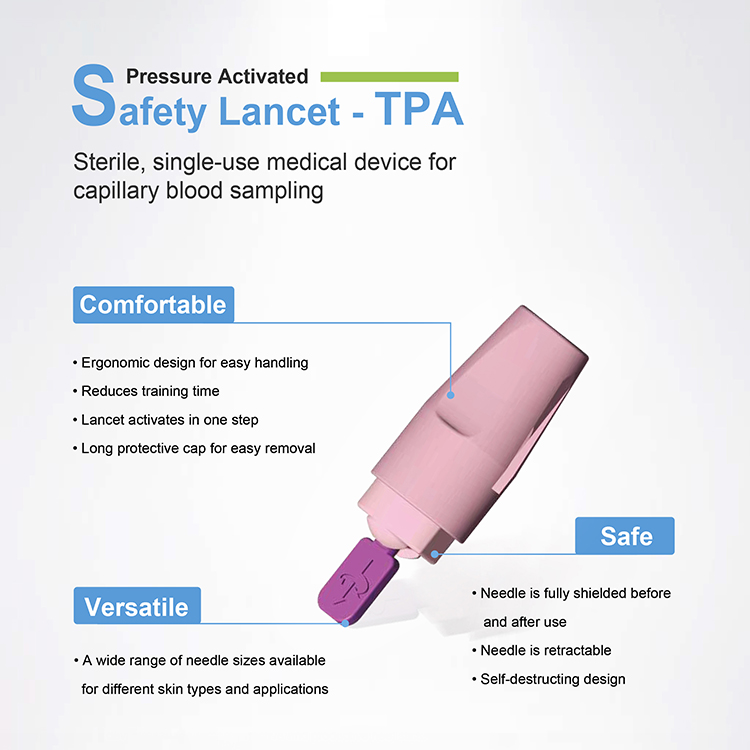Aug . 06, 2024 00:39 Back to list
Exploring Hepatitis B Surface Antigen Testing Options from Various Manufacturers for Enhanced Disease Management
Understanding HBsAg Antigen Testing The Role of Manufacturers
Hepatitis B virus (HBV) infection remains a significant public health concern globally, affecting millions of individuals and leading to severe liver diseases, including cirrhosis and liver cancer. The hepatitis B surface antigen (HBsAg) test is a critical tool in diagnosing active HBV infection, and the role of manufacturers in producing accurate, reliable, and accessible HBsAg tests cannot be overstated.
What is HBsAg Testing?
HBsAg is a protein that the virus produces, and its presence in the blood indicates an active HBV infection. The HBsAg test serves two major purposes it helps in diagnosing an ongoing infection and assists in the screening of blood donations. The test can tell healthcare providers whether a patient is currently infected with the virus, which is essential for initiating treatment and preventing complications.
The Importance of Accurate Testing
The accuracy of HBsAg testing is paramount for effective patient management. False positives can lead to unnecessary anxiety and invasive procedures, while false negatives can result in delayed treatments, increasing the risk of severe health outcomes. Therefore, manufacturers of HBsAg tests must adhere to stringent quality standards and regulations. This ensures their products are reliable, precise, and capable of delivering consistent outcomes across various populations and settings.
The Role of Manufacturers
Manufacturers of HBsAg tests develop different methodologies, such as enzyme-linked immunosorbent assays (ELISA), chemiluminescent immunoassays (CLIA), and rapid diagnostic tests (RDTs). Each method has unique advantages depending on the context in which it is used. For instance, RDTs provide quick results and can be utilized in remote areas or low-resource settings, making hepatitis B screening more accessible.
hbs antigen test manufacturer

Leading manufacturers invest heavily in research and development to improve the sensitivity and specificity of their tests. Innovations include the incorporation of advanced technology, such as microfluidics and nanoparticle-based assays, which enhance the detection capabilities and reduce the time taken to obtain results.
Regulatory Compliance and Quality Assurance
The quality and safety of HBsAg tests are governed by strict regulatory frameworks, often varying by country. In the United States, the Food and Drug Administration (FDA) evaluates the tests before they can be marketed, while in Europe, the In Vitro Diagnostic Medical Devices Regulation (IVDR) oversees their approval. Manufacturers must conduct extensive clinical trials and provide evidence of their tests' efficacy and reliability. This regulatory scrutiny ensures that healthcare providers and patients can trust the tests' results.
Global Access and Affordability
As the prevalence of hepatitis B remains high in many parts of the world, the affordability and accessibility of HBsAg tests are critical. Manufacturers are increasingly adopting strategies to reduce production costs without compromising quality. Collaborations with public health organizations and NGOs aim to distribute tests in developing regions, facilitating early detection and treatment.
Moreover, educational initiatives are paramount. Manufacturers are also involved in educating healthcare professionals on interpreting test results and understanding their implications for patient management. This holistic approach fosters better health outcomes and drives awareness of hepatitis B prevention and treatment.
Conclusion
In conclusion, HBsAg antigen testing serves as a vital component in the fight against hepatitis B. The manufacturers of these tests play an essential role in ensuring the availability and reliability of diagnostic tools, which are crucial for managing HBV infections. As technology advances and global health efforts intensify, the continued collaboration between manufacturers, healthcare providers, and public health organizations will be pivotal in controlling hepatitis B and improving the health of populations worldwide. Through ongoing innovation and adherence to quality standards, we can ensure that accurate and accessible testing remains a cornerstone of effective hepatitis B management.
-
Dengue NS1 Rapid Diagnostic Test Kit
NewsMar.07,2025
-
Dengue NS1 Rapid Diagnostic Test Kit
NewsMar.07,2025
-
Dengue NS1 Rapid Diagnostic Test Kit
NewsMar.07,2025
-
Transferrin Rapid Test Cassette Tumor Marker TF Card
NewsMar.07,2025
-
Malaria Pf Pan Rapid Diagnostic Test Kit
NewsMar.07,2025
-
malaria pf / pan ag rapid test
NewsMar.07,2025

